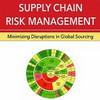 One seemingly small link in the supply chain of goods is pallets; those little timber crates on which most goods are secured for movement and handling. However, despite their relatively small role, they are ever-present, which means changing the way we think about them and how we use them can have a massive knock on effect to the whole supply chain due to their sheer numbers. Without pallets, very few supply chains can function effectively, but pallets can also be a supply chain trouble spot. So what problems do pallets cause for the supply chain? This can be broken down into four main areas; their associated costs; their safety and hygiene; their ease of use and their environmental impact. Addressing, or at least reducing, these areas could have benefits that could be felt all the way down the supply chain. How?
One seemingly small link in the supply chain of goods is pallets; those little timber crates on which most goods are secured for movement and handling. However, despite their relatively small role, they are ever-present, which means changing the way we think about them and how we use them can have a massive knock on effect to the whole supply chain due to their sheer numbers. Without pallets, very few supply chains can function effectively, but pallets can also be a supply chain trouble spot. So what problems do pallets cause for the supply chain? This can be broken down into four main areas; their associated costs; their safety and hygiene; their ease of use and their environmental impact. Addressing, or at least reducing, these areas could have benefits that could be felt all the way down the supply chain. How?
Firstly; their associated costs.
In any industry, associated costs are always passed on down the chain. Therefore associated savings can also be passed on. So what are the associated costs of pallets?
The costs of pallets can cover the purchase of the pallets, the maintenance of the pallets, the replacement of the pallets and transportation of the pallets. The higher these are, the more expensive the handling of goods will be. So where can savings be made?
The first savings made can be on the material used for the pallets. Traditionally they have been made from timber, which although cheap in the beginning, they can be costly in the long term. This is because timber pallets have a very short shelf life, and often need replacing, representing a constant cost to the transport company. By switching to plastic pallets, although a more expensive outlay, they require less replacement in the future as they’re stronger. These savings can be passed on once they initial investment has been covered.
The second saving that can be made is for companies to switch from owning their own fleet of pallets to using a pallet pooling service. These are services that rent out pallets on a short or long term basis. They also handle the maintenance and management of the pallet fleet. By using a company like this, transport companies can make savings. They don’t need to cover the costs associated with maintaining and managing their own pallet fleets, or pay to expand there own pallet fleet to match a big order, only to have the extras lying redundant for the rest of the year.
Secondly; their safety and hygiene.
The mass transit of goods will always lead to damages or accidents, to both goods and people, which ultimately have a cost. However, the role that pallets play in this can be reduced.
The simple truth is that timber pallets can be dangerous. The wood can splinter and the nails can protrude. Goods and flesh can be cut. Timber pallets can also harbour germs, as they cannot very easily be hygienically cleaned.
However, a switch to plastic pallets can significantly reduce this risk. The plastic does not splinter (or certainly does not splinter so readily as wood), and they don’t require nails in their production, so that risk is removed altogether. Plastic is also very easy to disinfect, making them very hygienic, especially for the transportation of foods or medicines.
Thirdly; their ease of use.
Due to the low price and ease to build timber pallets, it has been very hard to standardise their size and dimensions, which can lead to complications in their handling and transportation. And disruptions and problems cost money.
However, with plastic pallets this problem can be removed. Because they require specialist production, they can be easily monitored and regulated in regards to their size and dimensions. By standardising this across the industry, it makes them less problematic, and thus ultimately cheaper to work with.
Fourthly; their environmental impact.
The last way that pallet management can benefit the whole supply chain is environmentally, which is increasingly an issue for the transport industry. By addressing both the materials used in their creation, and how they are managed, savings can be made.
By switching from timber pallets to plastic pallets, less pallets will need to be made overall. This is because plastic pallets last a much longer time and do not require replacing at such a rate as timber. Plus, when a plastic pallet needs replacing, it can be recycled, whereas a timber pallet often is beyond use and just gets burnt.
By switching to plastic pallets, fuel bills can also be cut along the supply chain. This is because plastic pallets, although as strong, are not as heavy as timber pallets. The lighter the load, the lower the fuel bill, so the greater the savings.
The environmental savings can be pushed further by companies switching from owning their own pallet fleets to renting pallets. This is because often companies need certain amounts of pallets at certain times of the year, which then lay dormant for the rest of the year. Multiply this by many companies and it leads to a big surplus of unused pallets. By renting pallets instead in the future, companies don’t incur this wasteful cost as they instead draw them from a reusable rental fleet. The pallets left over from one company’s down time can then be used by another company during their busy time.
The bigger the environmental savings that can be created at the source, the bigger the environmental changes that can be passed throughout the transport and shipping industry.
Although pallets seem a small by-product of the shipping industry, their sheer number means that they have a big impact on the costs of shipping. But, by transport companies examining what sort of pallets they use, and how they manage their fleet, they can help themselves make big cost savings, which can be then passed along the chain, all the way to the retailer and the end customer.
Related link:
- ppsequipment.co.uk: Pallet and crate systems
Related posts:
- husdal.com: Occupational hazards in supply chains
- husdal.com: Supply chains and barcodes
Disclosure: The information for this post was provided by www.ppsequipment.co.uk the pallet pooling and crate hire specialists.












